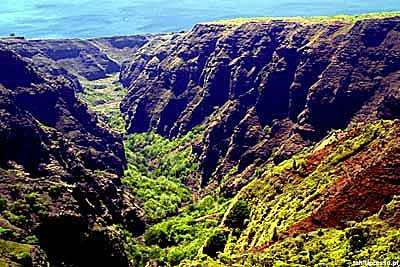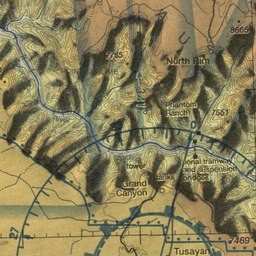Draft EIS Addresses "Substantial Restoration Of Natural Quiet"
In The Vicinity Of Grand Canyon National Park
The National Park Service (NPS) has developed a draft plan to
address the impacts of aircraft noise on park resources and visitor
experience. Released by the park Thursday, the plan is formally
called a Draft Environmental Impact Statement (EIS), Special Flight
Rules Area in the Vicinity of Grand Canyon National Park. The
document will be available for public review and comment for 120
days, with public comments due by June 6, 2011.

The Draft EIS was developed to address the mandate of the 1987
National Parks Overflights Act to provide for substantial
restoration of the natural quiet and experience of Grand Canyon
National Park and for protection of public health and safety from
adverse effects associated with aircraft overflights.
In order to restore natural quiet, a definition of what natural
quiet is, had to be developed. Substantial restoration of natural
quiet in Grand Canyon National Park is defined as being achieved
when reduction of noise from aircraft operations at or below 17,999
feet mean sea level (MSL) results in 50% or more of the park
achieving natural quiet (i.e., no aircraft audible) for 75% to 100%
of the day, each and every day. The NPS considers 50% of the park a
minimum restoration goal.
"Grand Canyon is known for breathtaking vistas, geologic
landscapes, the Colorado River, a rich history, adventurous trails,
wildlife, solitude – and natural quiet", stated Palma Wilson,
Acting Park Superintendent. "In the litany of the park's
attributes, natural quiet is perhaps one of the most
important.Without its natural soundscape – a canyon wren's
descending trill, wind rustling through the pines, the roar of the
Colorado River, and silence – Grand Canyon would still be
amazing to look at, but it would lack something essential and vital
to its remote and wild character."

Through the Draft EIS the NPS is proposing a plan for managing
helicopter and airplane flights over Grand Canyon. These flights
currently carry more than 400,000 visitors above the canyon each
year. Like all other uses in the park, air-tours play an important
role in visitor enjoyment. But without better, more thoughtful
management air-tour flights can interfere with the enjoyment of
visitors on the ground. Air-tour flights also affect soundscape and
other park resources of Grand Canyon's 1,902 square miles.
Four alternatives are evaluated in the Draft EIS: Alternative A,
continued current management (the No Action Alternative), and three
action alternatives – including the NPS Preferred
Alternative. All alternatives apply to aircraft operating in Grand
Canyon's Special Flight Rules Area, and would continue to exempt
operations in support of the Hualapai Tribe from annual allocations
and daily caps.
Key provisions of the NPS Preferred Alternative include:
- Increases restoration of natural quiet in the park from 53% to
67%, by reducing aircraft noise in the park.
- Allows for 65,000 air-tour and air-tour related operations
annually (8,000 more air-tour flights above what was reported by
air tour operators.
- Provides long and short loop air tour routes, with a seasonal
shift in short routes at six month intervals.
- Moves most nor-air tour operations outside of the park.
- Moves routes away from many sensitive cultural, natural and
visitor use areas.
- Sets a daily cap of 364 flights classified as air tours (50
air-tour flights more than what was reported for a peak day in 2005
– the base year for analysis in the draft EIS).
- Increases flight altitudes near North Rim viewpoints.
- Reduces routes in Marble Canyon.
- Requires full conversion to quiet technology, also known as QT
aircraft, within 10 years.
- Provides at least one hour of quiet time before sunset and
after sunrise every day.
- Makes no changes to the four existing general aviation flight
corridors.
- Raises flight free zone ceilings to 17,999 feet.

The NPS Preferred Alternative includes elements that were
proposed by one or more members of the Grand Canyon Working Group
(Working Group). The Working Group was established under authority
of the National Parks Overflights Advisory Group (required by the
National Parks Air Tour Management Act of 2000), and consisted of
representatives from the NPS, Federal Aviation Administration,
air-tour operators, environmental groups, tribes, commercial and
general aviation, recreational interests, and other federal
agencies. The working group was tasked with assisting the agencies
in meeting the statutory mandate contained in the 1987 National
Parks Overflights Act.
"Protection of park resources is at the heart of this plan,"
stated Palma Wilson. She added, "As stewards of these public lands,
it is imperative that we make every effort to preserve and protect
all resources, including natural quiet. The National Park Service
Preferred Alternative provides for substantial restoration of
natural quiet in 67% of the park over a 10 year period. It meets
our stated objectives to provide for the protection of public
health and safety; protect wilderness values, wildlife, and
sensitive species; provide for quality air-tour experiences, as
well as primitive recreational opportunities without aircraft
intrusions while providing for an economically viable air-tour
industry and extraordinary air-tour experiences for visitors."
The NPS will host five open-house style public meetings to
present the Draft EIS, gather input, and answer questions. Meetings
will be held in Flagstaff, Phoenix, and Grand Canyon, Arizona; and
in Salt Lake City, Utah, and Las Vegas, Nevada. Additional details
regarding public meetings will be announced soon.
 Classic Aero-TV: The Switchblade Flying Car FLIES!
Classic Aero-TV: The Switchblade Flying Car FLIES! ANN FAQ: Q&A 101
ANN FAQ: Q&A 101 ANN's Daily Aero-Term (04.12.24): Discrete Code
ANN's Daily Aero-Term (04.12.24): Discrete Code ANN's Daily Aero-Term (04.13.24): Beyond Visual Line Of Sight (BVLOS)
ANN's Daily Aero-Term (04.13.24): Beyond Visual Line Of Sight (BVLOS) ANN's Daily Aero-Linx (04.13.24)
ANN's Daily Aero-Linx (04.13.24)





